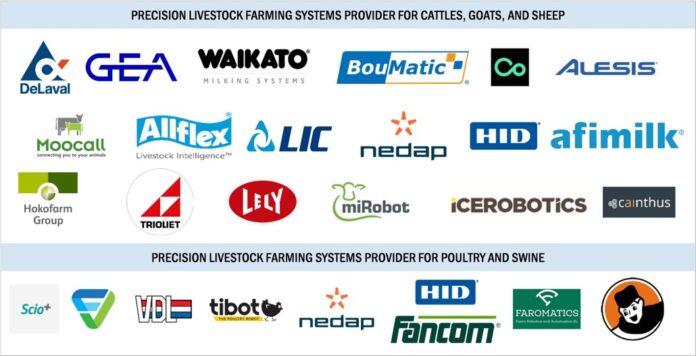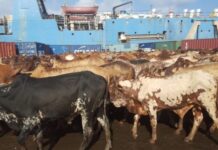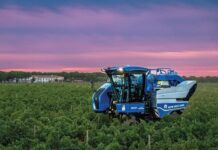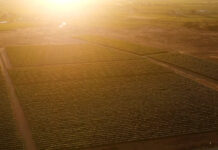Livestock production contributes about 35 percent of agricultural GDP in sub-Saharan Africa. Projected growth in the consumption of animal products is offering opportunities to improve the income of the livestock-dependent poor. At the same time, poor animal keepers are faced with several challenges: Will the poor not be sidelined in the competition to satisfy growing demand for safer animal products; will a reduction of government involvement in the provision of animal health services threaten small-scale producers, and will poor producers be able to comply with more stringent quality standards required by agro-industries and retailers; will limited access to land, water, technology and high-value marketing chains become insurmountable barriers to improving small-scale animal production? A robust livestock policy is needed targeting access to natural resources, increasing production, productivity and value addition and branding, and enhancing competitiveness of the livestock sector. The demand for automation in the livestock industry is rising significantly to increase productivity, improve farm management, tackle the challenge of high labor costs, and address the need for real-time analysis and better decision-making, Integrating Al and loT in livestock monitoring substantially impacts farm operations’ efficiency and output. Sensors and smart RFID tags help to track farm animals and detect signs of lameness, enabling farmers to take appropriate actions at the right time. In addition, these devices also send real-time alerts to farmers via mobile apps, text messages, or voice mails. Automation efficiently uses several resources, such as electricity, water, and food, and helps reduce labor expenses. It has become necessary for modern-day operations of large-scale dairy and poultry farms. Hence, several livestock farms are seeking a transition from precision livestock farming to decision livestock farming. According to MarketsandMarkets The precision livestock farming market projected to reach USD 11.2 billion by 2028. The information gathered from deploying various sensors and devices enables farm owners to make better decisions. Regulations laid down by various governments for securing food safety and national biosecurity could prompt increased poultry farm activity with advanced technology for monitoring and tracking the health of birds. The integration of various sensors with advanced software can help monitor birds in real-time and take timely corrective actions to prevent birds from getting ill. The use of emerging technologies, such as Al and loT, along with robotics, for various tasks such as cleaning, data gathering, collecting eggs, monitoring behavior, etc., in poultry farms can improve farm management and help detect signs of abnormalities among the birds. This can reduce the chance of sickness among birds, thereby improving the health of birds. The use of antibiotics has become a global concern in the agriculture industry, with the US banning antibiotic growth promoters in its poultry and meat industries.
Artificial intelligence and visual monitoring are penetrating the poultry monitoring space to gain insight into flock behavior, feeding pattern, bird comfort, growth, and early disease detection. Flox, a UK-based firm, uses Al with smart cameras to monitor activity, track weight, and provide real-time vision to poultry farm owners. The use of livestock monitoring technology can help address several challenges faced by farmers or ranchers pertaining to disease detection, stress detection, and animal comfort. Thus, the focus of farmers on precision livestock monitoring is increasing. Sensors and RFID tags attached to animals provide real-time information and help farmers take corrective actions. For instance, rumination monitoring systems help curb mastitis and ketosis in animals, while heat detection systems enable timely identification and quarantine of animals with diseases. The availability of several advanced sensors, collars, and RFID tags at optimum costs has led to the adoption of such devices among livestock farmers to monitor animals in real-time. Moreover, the availability of real-time information leads to timely decisions, thereby reducing the operations costs associated with the health of the animals. The major focus of large companies in the market on livestock health monitoring has led to technological advancements and new product developments with respect to precision livestock farming. The major players in the market are focusing on technological advancements and innovative product developments for livestock monitoring. For instance, Cargill (US) and Cainthus (Ireland) entered a strategic partnership to implement facial recognition technology in the dairy farming industry across the world to enable producers to make appropriate decisions associated with their livestock. Also, Fancom (Netherlands) introduced a new turkey weighing scale that ensures extremely precise measurement results, enabling farmers to closely monitor their birds’ growth. Similarly, Afimillk offers Silent Herdsman, which is a smart neck collar that detects estrus and health problems in dairy cows and transmits the data wirelessly to mobile or PC. This results in the efficient breeding of cows, thereby achieving optimization of dairy herds by increasing the milk production capacity of herds. IceRobotics uses IceQube sensors for accurate estrus detection. The Internet of Things (IoT) and artificial intelligence (AI) are empowering dairy and poultry farmers to enhance livestock health through advanced remote monitoring and data-driven decision-making. Adopting technologies such as RFID, GPS, milking robots, autonomous feeding systems, machine learning, and predictive analytics allows ranchers to increase their income through efficient management of livestock farms. For instance, DeLaval, a leading provider of dairy equipment and services, offers a variety of Al-based solutions for precision livestock farming, including automated milking systems, feeding systems, and manure management systems. These solutions can help farmers improve milk production, animal welfare, and farm efficiency. Farmers face several threats, such as theft, predator attacks, and animal health issues. In the case of dairy farms, it is a tedious job to keep track of each cow’s health & reproductive behavior, signs of stress or early symptoms of diseases, and the feed intake and milk production of each cow. IoT has the potential to transform methods of livestock farming by helping farmers to have a complete view of herds. Data generated by sensors, RFID tags, GPS systems, and other smart devices provide information about health and nutrition insights, behavior, location, and fertility of livestock or dairy cows. IoT and advanced analytics help farmers analyze real-time data, such as eating behavior, heat, and productivity. Livestock diseases are more difficult to cure if not detected in the early stages; hence, with the help of sensors or wearable tags, livestock health can be monitored more efficiently. There is increased adoption of Al and lot for precision livestock farming applications. Al can play a vital role in increasing productivity and reducing farm health incidents. Introducing precision livestock farming solutions compatible with Al- and loT-based devices are expected to bring new revenue sources for manufacturers of livestock monitoring solutions. Key players in the field are leveraging the opportunities in the market for loT-compatible monitoring solutions; technological developments are expected to create new revenue streams for companies operating in the precision livestock farming market.








